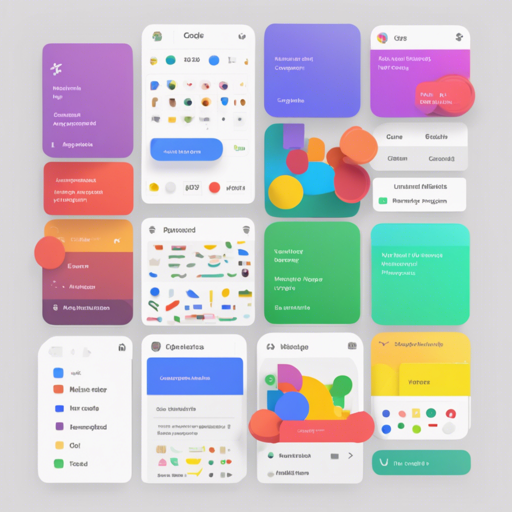Are you looking to enhance your project with a stunning color palette based on Google’s Material Design? With its range of colors and easy integration into popular CSS preprocessors, using Material Design colors can significantly improve the aesthetics of your application. Here, we will guide you through the installation and usage of Material Design colors step by step!
Installation
To start utilizing the Material Design Color palette, you first need to install it. You can choose from several methods depending on your preference:
- Git: Clone the repository using the command:
git clone git:github.com/mrmlncm/material-color.git - Bower: Install via Bower with:
bower install --save material-color - NPM: For Node.js projects, use:
npm install --save material-design-color
Supported Languages
This package supports all popular CSS preprocessors:
How to Use Material Design Colors
To make use of the Material Design colors in your project, you need to import the color variables. Here’s how you can do that based on the preprocessor you’re using:
Importing the Color File
@import lib/material-color;Using Color Variables
The build variable structure is defined as follows:
- (\$) – Sign of the variable in the preprocessor.
- (color) – Any of the available colors.
- (range) – Specify a range from options like 100, 300, 700, A100, etc., with a default value of 500.
Example Usage
Here’s how you can apply colors to your styles in either Less, SCSS, or Stylus:
less
@import lib/material-color;
.example-1 {
background-color: @clr-blue;
}
.example-2 {
background-color: @clr-green-700;
}Additional Variables
In addition to colors, you can also access typography variables from Material Design Typography:
- clr-ui-display-4
- clr-ui-display-3
- clr-ui-display-2
- clr-ui-display-1
- clr-ui-headline
- clr-ui-title
- clr-ui-subhead-1
- clr-ui-body-2
- clr-ui-body-1
- clr-ui-caption
- clr-ui-menu
- clr-ui-button
Using Mixins
Material Design Color also provides mixins to streamline the application of colors through lists of variables. Here’s how you can utilize mixins:
less
@import mixins/class-generator;
.material-color-class(red);
.material-color-class(red, background-color);
Troubleshooting
If you run into any issues while integrating the Material Design Color Palette, consider checking the following:
- Ensure that you have the correct version of your preprocessor installed.
- Double-check your import paths to confirm they’re correctly pointing to the libraries.
- Make sure that you don’t have conflicting variable names in your stylesheets.
For more insights, updates, or to collaborate on AI development projects, stay connected with fxis.ai.
Conclusion
Adding Google’s Material Design colors to your project is both straightforward and beneficial. It not only boosts the visual appeal of your application but also ensures consistency and accessibility in design.
At fxis.ai, we believe that such advancements are crucial for the future of AI, as they enable more comprehensive and effective solutions. Our team is continually exploring new methodologies to push the envelope in artificial intelligence, ensuring that our clients benefit from the latest technological innovations.

